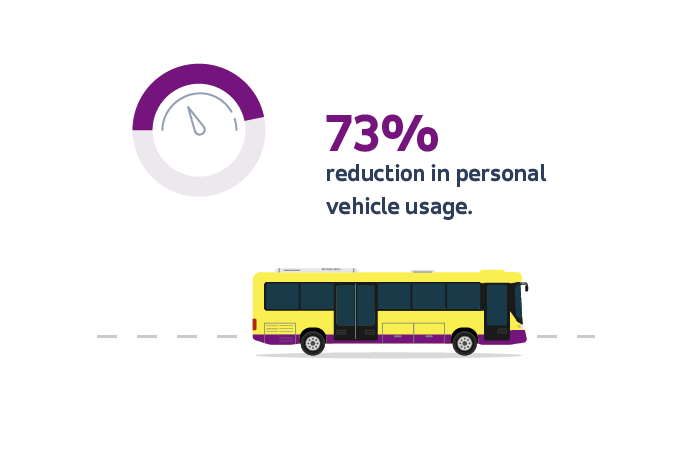It’s easy to wax lyrical about how technology can enable meaningful shifts in the way people move around their communities. But when done right, it’s no exaggeration. In November 2020, Via ran a survey of passengers using Go2 in Sevenoaks, Kent — a demand-responsive transport service that complemented (and ultimately replaced) the local fixed-route bus network in a rural area. Here’s what we found.
Go2 is replacing private vehicle and taxi journeys.
Had Go2 not been an option, more than 20% of respondents said they’d have resorted to using a personal vehicle. Another 18% said they would have ridden in a taxi, while nearly 20% of others respondents saying they would have skipped the trip altogether.
People use personal cars less often when an on-demand bus service is available.
More than 70% of survey respondents told us they have reduced their personal car usage since the service launched. “Saves me getting my car out and finding — and paying — for somewhere to park. Previously, there never seemed to be buses available when I wanted them,” one rider said.
Go2 has unlocked more opportunities for mobility — all while reducing commute time.
Of all the benefits the new service offers, riders told us their number one is expanded commuting and travelling opportunities.
Demand-responsive services increase public transport usage.
Of all survey respondents, 22% had not used Sevenoaks’ fixed-route buses prior to the Go2 launch just 6 months earlier.




